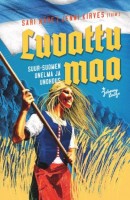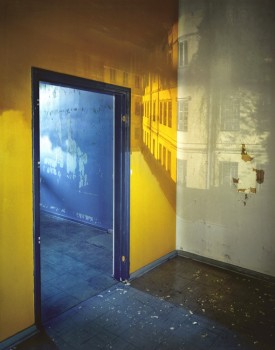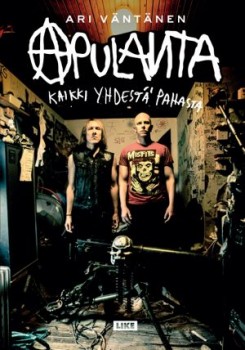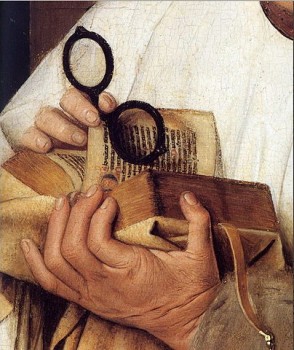Archive for September, 2014
Finland, cool! The Frankfurt Book Fair 8–12 October
30 September 2014 | Articles, Non-fiction

Finnland. Cool. pavilion in Frankfurt, designed by Natalia Baczynska Kimberley, Nina Kosonen and Matti Mikkilä from Aalto University
It starts next week: Finland is Guest of Honour at the Book Fair in the German and global city of Frankfurt. This link will take you to it all.
Approximately 170,000 professionals from the literary world are expected to visit the exhibition halls from Wednesday to Friday; the weekend is reserved for the general public, c.100,000 visitors. Since 1980s different countries have been in focus each year. More…
Luvattu maa. Suur-Suomen unelma ja unohdus [The promised land. The dream of Greater Finland, and how it was forgotten]
26 September 2014 | Mini reviews, Reviews
 Luvattu maa. Suur-Suomen unelma ja unohdus
Luvattu maa. Suur-Suomen unelma ja unohdus
[The promised land. The dream of Greater Finland, and how it was forgotten]
Toim. [Ed. by] Sari Näre & Jenni Kirves
Helsinki: Johnny Kniga, 2014. 407 p.
ISBN 978-951-0-40295-5
€36.90, hardback
In the 1920s and 1930s Finland was powerfully influenced by the idea of a Greater Finland which was also to include the Finno-Ugric peoples living on the Soviet side of the border – at least East Karelia, if not more. Right-wing nationalists in particular nourished a vision that had its roots in the idealistic ‘Karelianism’ of the nineteenth century. When during the Second World War in 1941 Finland ended up fighting the Soviet Union as an ally of Nazi Germany, and the Finnish army advanced far beyond the eastern border, for a short time many Finns even viewed a Greater Finland as a possibility. After Finland suffered defeat in the war there was a desire to forget both the embarrassing alliance with Nazi Germany and the frenzied nationalistic dreams of Greater Finland with their population resettlements and other plans. Not until the 1970s did anyone begin to study the subject in more depth. Five historians from a younger generation present a fascinating study of the Greater Finland idea and the attempts at its realisation, discussing, for example, the attitude to the war taken by women and the clergy, life at the front line, and propaganda, including its expression in literature.
Translated by David McDuff
Reflections on light
24 September 2014 | Extracts, Non-fiction

Speaking House #12, 2006. Photo: Marja PIrilä
A camera obscura (‘darkened room’) is the optical device that made photography possible; it is a box – or a room – with a hole in one side. Photographer Marja Pirilä has been using this method as a tool for almost 20 years. The book Carried by Light spans more than 30 years of her photography.
In the book artist and researcher Jyrki Siukonen notes in his essay ‘Eyes and Cameras’ that ‘in photographing spaces Pirilä also depicts people. The dreams continue on the walls of the empty building, as if after the people the house had become like them and were dreaming the dreams itself.’
Photographs and text extracts from Carried by Light by Marja Pirilä (Musta Taide, 2014)
Life: facts and fiction
10 September 2014 | Extracts, Non-fiction
 In his latest book, the architect and author Arne Nevanlinna (born 1925) recalls, among other things, his Helsinki childhood and family, the wartime period, his fellow architect Alvar Aalto, various aspects of the spirit of the times, his own work and writings. His first novel Marie was published in 2008. Extracts from Arne. Oman elämän kintereillä (‘Arne. On the trail of one’s life’, Siltala, 2014)
In his latest book, the architect and author Arne Nevanlinna (born 1925) recalls, among other things, his Helsinki childhood and family, the wartime period, his fellow architect Alvar Aalto, various aspects of the spirit of the times, his own work and writings. His first novel Marie was published in 2008. Extracts from Arne. Oman elämän kintereillä (‘Arne. On the trail of one’s life’, Siltala, 2014)
My attitude to my own identity has developed from the unconsciousness of childhood, the uncertainty of early adulthood, the artificial arrogance of middle age and the self-analysis of approaching retirement, to my present situation.
Despite the fact that my first book had some degree of success, it took many books before I felt I was a real writer. The process continued for well over ten years, by which time I was already over eighty. Before that, I thought of writing as a way to pass the time and combat loneliness. I imagined that I was writing for a living, and that I lived in order to write. I was in the fortunate position of not to think about my income.
Even then, I knew that this was just a catchphrase for the event that it occurred to someone in the audience to ask me why I wrote. That never actually happened. No wonder, as both question and answer would have been unnecessary, to put it mildly, and stupid, to put it harshly. More…
Furies and angels: best-selling books in August
10 September 2014 | In the news

On the August list of the best-selling non-fiction compiled by Suomen Kirjakauppaliitto, the Finnish Booksellers’ Association, are two translated books on furies and angels: number two is Hitler’s Furies: German Women in the Nazi Killing Fields by Wendy Lower (Atena), number three is Love from Heaven (Otava) by Lorna Byrne, an Irishwoman and writer of books about angels who claims she has met the Archangel Michael.
At the top of the list, however, was Apulanta, the story of the Finnish rock band of the same name (it translates as ‘Fertilizer’) by Ari Väntänen (Like).
The top three Finnish fiction books were new: the latest novel by Tuomas Kyrö, Ilosia aikoja, Mielensäpahoittaja (‘Happy times, the one who takes offence’, WSOY), a new novel, about a couple who wins the lottery by Anna-Leena Härkönen, Kaikki oikein (‘Direct hit’, Otava) and a first novel, Kissani Jugoslavia (‘My cat Yugoslavia’, Otava), by Pajtim Statovci (born 1990), the story of an Albanian family arriving in Finland as refugees.
Mielensäpahoittaja is a noun: Kyrö’s protagonist is an 80-something man who lives in the countryside and opposes most of what contemporary lifestyles have to offer. His favourite sentence used to begin with ‘so I took offence when…’ This is the third book in the surprisingly popular series, and Kyrö’s Mr Grumpy (who originates from monologues written for the radio) has also appeared on the stage as well as on the screen: the first night of the film Mielensäpahoittaja (directed by Dome Karukoski) took place in early September.
Instant erudition, or, who are you kidding?
2 September 2014 | Articles, Letter from the Editors, Non-fiction

Time to read? Detail from Madonna with Canon van der Paele by Jan van Eyck (1439. The Groeninge Museum, Brugge). Wikipedia
In a recent ‘Saturday essay’ in the Helsingin Sanomat newspaper (9 August) journalist Oskari Onninen ponders the moral dilemma of pretending to be erudite. For example, who has the time to read books these days? ‘The Woolfs remain unread, Bergmans unwatched’, Onninen writes.
Our consumerist lifestyle forces us to follow the trends of ever-expanding, multiplying forms of entertainment. However, it is apparent that the need to know about culture in order to pass as a cultured, well-informed citizen still exists, to some extent at least.
According to Onninen, there is less and less time for unproductivity. ‘If one looks for measurable cost-benefit results from the reading of heavyweight fiction, the act of reading will certainly not always be worthwhile.’ Consuming art (reading books, going to art exhibitions, watching plays) requires time and effort, and how productive is that? More…

